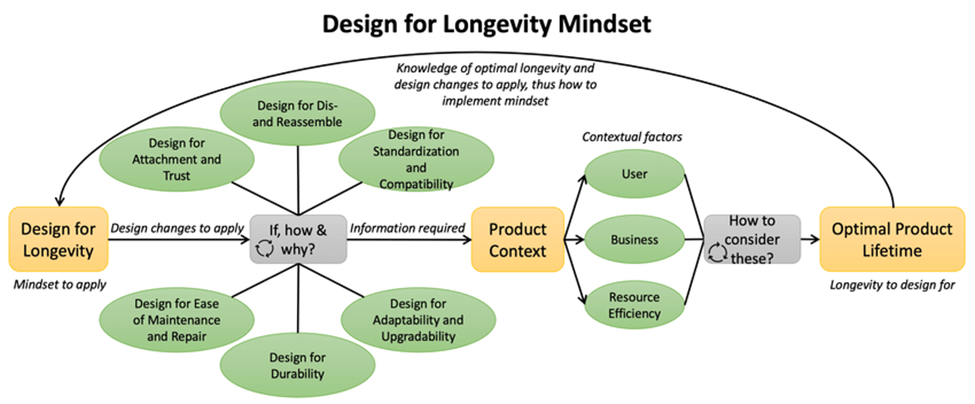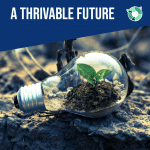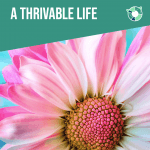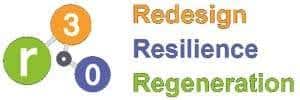Designing for longevity in the circular economy requires innovative approaches through systems thinking. This article explores how this approach supports sustainability by reducing waste and keeping resources in use. It highlights systems thinking as a key approach, encouraging adaptable, repairable, and emotionally durable products.

Source: UnSchool Journal
The Intersection of Systems Thinking and the Circular Economy
In our pursuit of sustainability, systems thinking and the circular economy are emerging as fundamental concepts. Systems thinking offers a holistic approach, enabling designers to view products as interconnected parts of larger ecological and economic systems. When combined with circular economy practices, systems thinking facilitates strategies to extend product life and maximise resource efficiency.
Designing for longevity aligns naturally with this framework. Rather than focusing solely on durability, it promotes creating adaptable, repairable products that can endure emotionally through cycles of use and reuse. Emotionally durable products are designed to foster a long-term emotional connection between users and the product, reducing the likelihood of premature disposal. These products remain meaningful and relevant to users, ensuring prolonged use and minimising waste.
This article explores how systems thinking, with an emphasis on circularity and interconnectedness, can help develop regenerative products. In alignment with The THRIVE Framework, which emphasises systematic and holistic thinking, this article explores how these concepts enhance sustainability efforts.
Understanding Circular Economy Practices and Designing for Longevity
The circular economy contrasts sharply with the traditional linear economy (take-make-dispose). Linear models rely on a continuous input of raw materials and often produce excessive waste. In the circular economy, however, the focus shifts to extending resources in use as much as possible. Models like reuse, recycling, and refurbishing support this shift. The Ellen MacArthur Foundation provides in-depth guidance on circular practices and highlights their environmental and economic benefits.

Source: TONTOTON
Designing for longevity aims to regenerate resources within ecological boundaries, ensuring natural systems have the time to restore and replenish resources as we use them. This approach reduces resource extraction and actively regenerates natural resources, ensuring they are used within ecological limits and can renew over time. By creating adaptable, repairable, and emotionally valuable products, designers can reduce the need for new materials and directly support regenerative design.

Source: Design for Longevity
The Role of Systems Thinking in Enhancing Circular Economy Practices
Systems thinking plays a key role in advancing circular economy. By considering the full lifecycle of a product, from material sourcing to end-of-life solutions, systems thinking helps designers look beyond individual components. It encourages them to consider the entire web of connections, including how material choices relate to end-of-life options like reuse, recycling, and upcycling.
Context-based metrics are essential in this process. These metrics allow designers to adapt circular strategies to the unique environmental and social factors of a region. As The THRIVE Framework emphasises, context-grounded metrics ensure that sustainable practices are theoretically sound and practically effective. For instance, the Cradle to Cradle (C2C) model, a systems-based approach, illustrates how closed-loop cycles for materials can be achieved by designing for both technical and biological reuse. Such models eliminate the concept of waste, framing it instead as a resource for continuous loops.

Source – Medium
Systems thinking enables designers to create products optimised for reuse, repair, and recycling, reducing waste at every stage. Real-world examples include Patagonia, which uses recycled materials and offers repair services to extend product life, and Fairphone, a modular smartphone brand known for repairable and upgradeable designs.
Challenges and Opportunities in Designing for Longevity within the Circular Economy
Integrating longevity into circular practices introduces complex wicked problems that involve balancing competing needs, such as material durability, cost-effectiveness, and cultural attachment to disposable consumption. Systems thinking is essential here, as it provides designers with the tools to analyse intricate challenges and navigate resource limitations, market demand, and changing consumer behaviours.
Multi-capital sustainability offers a way forward by balancing environmental, social, and economic capital. In this model, resource choices consider ecological limits, social welfare, and economic viability. This approach is especially relevant in products such as consumer electronics, where repairability and modularity may face cost and technical challenges. By accounting for these factors, companies can create a balanced longevity approach that considers environmental, social, and financial impacts equally.
The circular economy, enhanced by systems thinking, encourages solutions that go beyond traditional trade-offs. Companies like Xerox have designed their machines for modularity, enabling parts reuse and refurbishment within a closed loop. This extends a product’s life and reduces waste. This model aligns economic and environmental interests, ensuring efficient resource use over time.
Community initiatives like Tool Libraries and Borrowing Schemes offer practical solutions, allowing consumers to access products without ownership. These approaches align with circular economy principles by reducing demand for new products and extending resource use.
Case Studies in Action
Successful applications of systems thinking in longevity-focused design show how powerful this approach can be when put into practice. Here are some examples of businesses that are reimagining product design through systems thinking:
- IKEA: Recent modular designs emphasise repairability and disassembly, helping consumers repair, transport, and customise products over time. This approach aligns with the circular economy and enhances product life through adaptability.
- Vitsoe: Known for modular furniture, Vitsoe designs products that adapt to changing spaces and user needs. Vitsoe’s approach balances aesthetic appeal, durability, and environmental impact.
- Lacoste: Through its Durable Elegance Initiative, Lacoste creates clothing that lasts and can be repaired, minimising textile waste and supporting longevity in fashion.
Each case highlights an innovative approach to durability, modularity, and adaptability. Systems thinking facilitates a holistic evaluation of the social, economic, and environmental impacts of design choices, helping businesses anticipate the long-term implications of their products.
The future of Designing for longevity in the circular economy through Systems Thinking
Our world has increasingly finite resources. Systems thinking offers a pathway to resilient, regenerative design that aligns with circular economy principles. Designing with long-term thinking shifts the focus from immediate utility to sustainable longevity. This fosters a mindset where products are valued, maintained, and shared. Adaptability becomes key, encouraging designers to develop products that can be updated to suit evolving user needs and societal shifts.
As we move towards this future, adaptation will be critical. Long-lasting products are a practical necessity and a statement of commitment to sustainability. To realise this vision, businesses, designers, and policymakers must adopt systems thinking to create circular models that reduce waste, conserve resources, and promote longevity.
Call to Action (CTA): Collaborate to Drive Circular Economy Innovation Through Systems Thinking
Creating durable, sustainable products requires a collective effort. Therefore, collaboration drives innovation in this space. Policymakers, designers, and businesses should support policies and initiatives that actively prioritise systems thinking and circular economy practices. For instance, the European Commission’s Circular Economy Action Plan provides an excellent resource for understanding and implementing these principles. Additionally, this shift from top-down policy to community-driven change strengthens the foundation for a circular economy.
Designers would benefit from joining circular economy clusters or communities dedicated to sustainable design because doing so allows them to share insights and resources to drive progress. Similarly, values-based innovation emphasises purpose-driven design, aligning product development with broader societal values.
By adopting a collaborative approach and integrating systems thinking, we can move towards a future in which products are well-designed, long-lasting, and impactful. Furthermore, this transformation requires a united effort to build awareness, share knowledge, and advocate for sustainable design practices that prioritise longevity and regeneration.
Achieving the UN Sustainable Development Goals (SDGs)
Designing for longevity through systems thinking plays a crucial role in achieving the UN Sustainable Development Goal 12, which focuses on responsible consumption and production. By promoting the key principles of the circular economy, such as reducing waste, extending product life, and regenerating resources, this approach directly supports SDG12. Moreover, It encourages sustainable production practices that minimise environmental impact, foster resource efficiency, and promote ethical consumption patterns. By aligning design practices with SDG12, we not only create products that last longer but also shift societal values towards sustainability, ensuring a healthier planet for future generations. Collaboration across industries and communities will be key to realising this vision and driving systemic change on a global scale.
A thrivable framework
The THRIVE Framework empowers businesses to adopt sustainable practices by integrating systems thinking into circular economy strategies. Specifically, this approach promotes adaptable, repairable, and emotionally durable products, reducing waste and conserving resources. By aligning with context-based metrics, these practices address local environmental and social needs effectively, ensuring solutions are both practical and impactful.
Strong sustainability principles guide long-term strategies. For example, The framework’s holistic approach helps industries create value while contributing to a more sustainable and equitable future.
At THRIVE, we envision a world where circularity and sustainability thrive together. Explore our blog and podcasts, subscribe to our newsletter, and attend our webinars for insights into integrating systemic innovation into your sustainability strategies. Stay connected for more resources and expert perspectives on building a truly Thrivable future.























